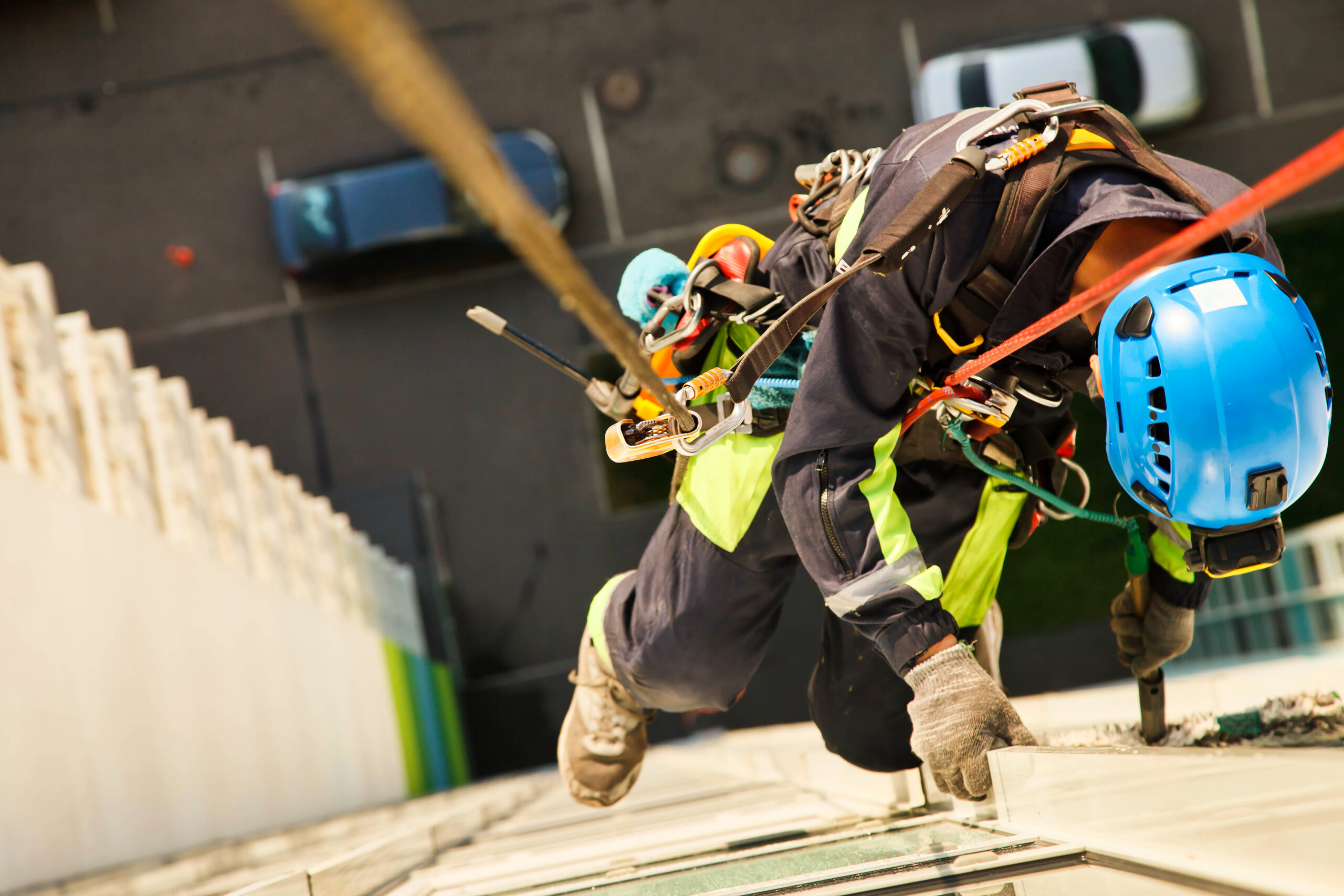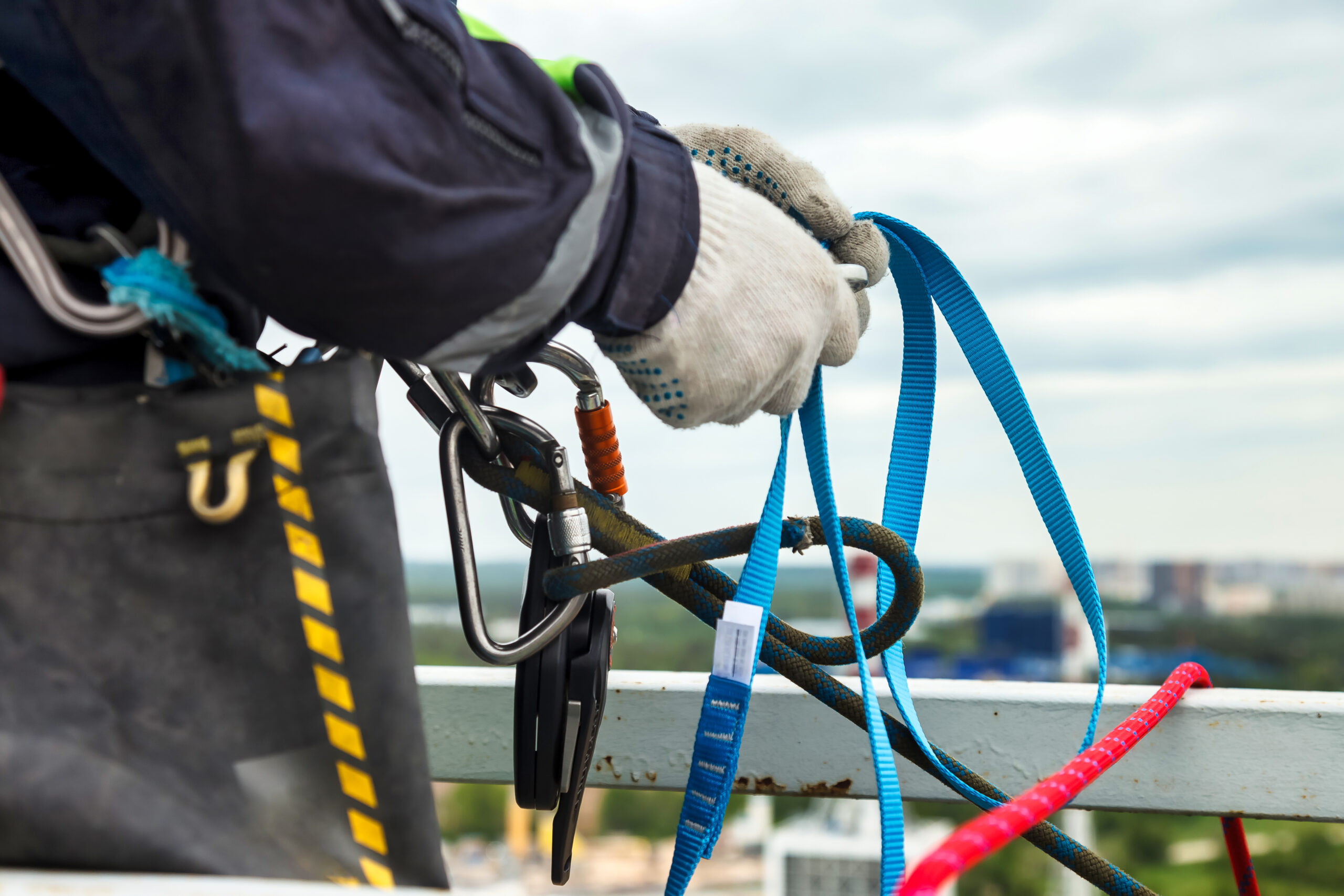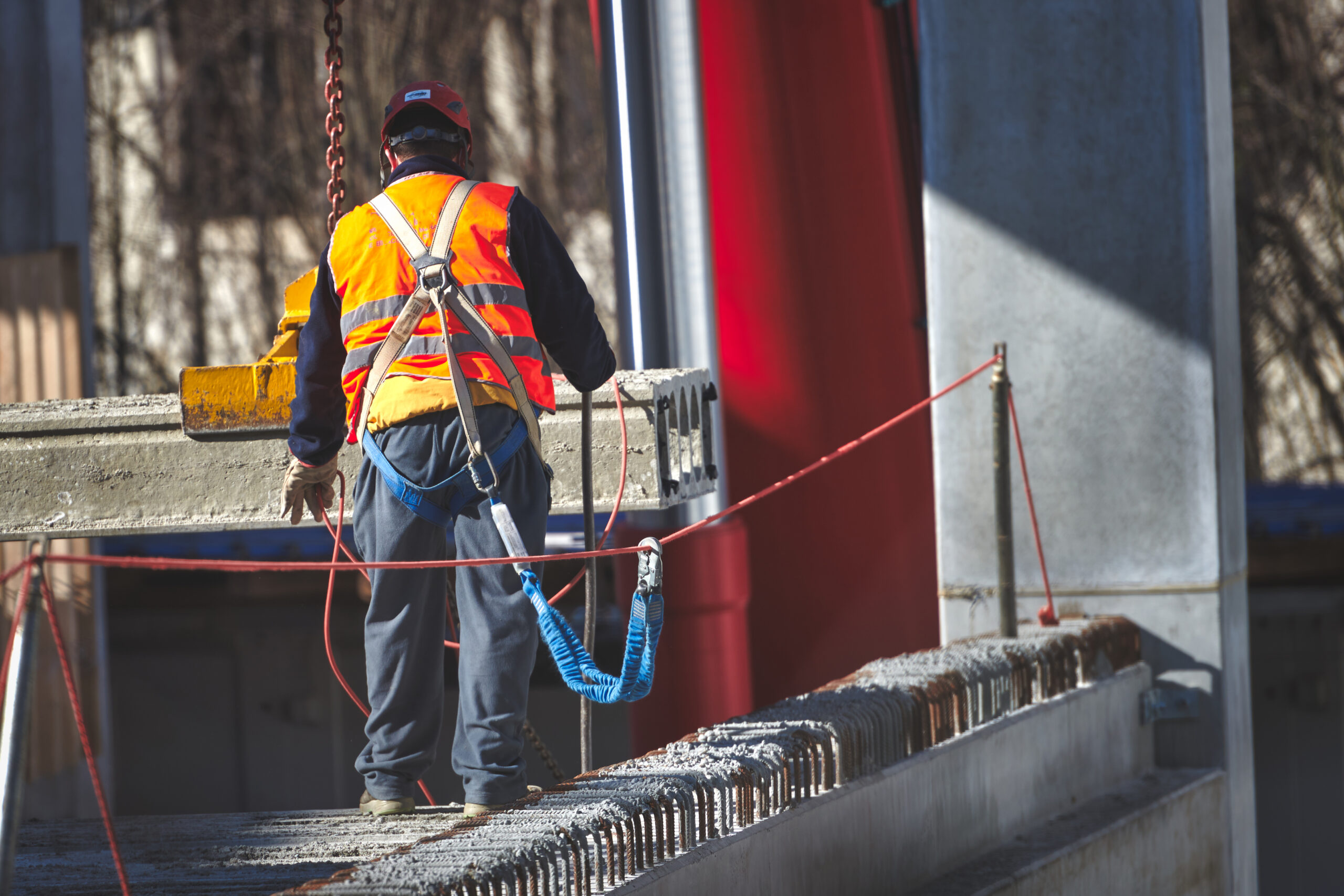Fall Arrest Vs Fall Restraint: Know The Key Differences Between The Terms
Fall arrest vs fall restraint is one of the most searched comparisons when it comes to staying safe while working at height. If you’re responsible for health and safety on a site, it’s vital to understand the difference between these two systems to protect workers and meet UK regulations.
A fall arrest system is designed to stop a person after they have already fallen, using equipment like harnesses and shock-absorbing lanyards to break the fall safely. In contrast, a fall restraint system prevents the fall from happening at all, by limiting a worker’s ability to reach a fall hazard typically with a fixed-length connection.
Both options are used in construction, roofing, maintenance and even cleaning jobs where there’s a risk of falling from height. But choosing the right one depends on the task, the working environment, and how much space there is around the hazard. The wrong choice could lead to serious injuries or legal trouble.
In this guide, we explain the key differences between fall arrest vs fall restraint. We’ll show you how they work, when they’re used, and what the law expects from you as an employer or site manager. You’ll also find practical advice on how to stay compliant with UK regulations and make the safest possible choice for your team.
What Is A Fall Arrest System?
A fall arrest system is designed to stop a worker from hitting the ground or a lower level after a fall. In the context of working at height, these systems act as a safety net, catching the user after a slip or loss of balance. The key aim is to minimise injury by stopping the fall safely and quickly.
There are different types of fall arrest systems, but they usually include a full-body harness, a lanyard, a connector, and an anchor point. These components work together to stop the fall and spread the force safely across the worker’s body. Unlike other systems that try to stop workers from reaching a hazard in the first place, fall arrest systems are used when a fall is still possible but the risk is controlled.
Fall arrest systems are often used in construction, maintenance work, roofing, and other tasks done on high surfaces. For example, someone working on scaffolding or repairing a tall structure may use this system if guardrails or nets aren’t enough. The setup allows some movement but ensures that if a person slips, the system locks quickly to prevent a free fall.
One thing that makes a fall arrest system different from other types of height safety is the focus on what happens after a fall starts. This means that proper training, correct fitting, and regular inspection of the gear are essential. A system that isn’t worn properly or isn’t anchored in the right spot can fail, putting the worker at serious risk.
Importantly, anyone using a fall arrest system must have a rescue plan in place. If someone falls and is left hanging, it can cause health issues in a short time, like suspension trauma. So, it’s not enough just to have the equipment, the full process around how it’s used, checked, and maintained needs to be taken seriously.
A reliable fall arrest system, when used correctly, can be the difference between a life-changing accident and a safe workday.

What Is A Fall Restraint System?
A fall restraint system is designed to stop workers from getting close enough to a hazard where a fall could happen. Unlike a fall arrest system, which allows a fall and then stops it, fall restraint works by keeping people away from the edge in the first place.
The main idea is very simple: stop the person from being able to fall at all. The system usually includes a body harness or belt, a fixed-length lanyard, and a secure anchor point. The length of the lanyard is chosen carefully to make sure the user cannot reach the edge or area where a fall might occur.
This system is common on flat roofs, platforms, or raised walkways where the edge is a danger zone. For example, if someone is working on a roof with no guardrails, a fall restraint setup can keep them a safe distance away while still allowing them to do their job. Because it stops access to danger, it’s seen as safer in many situations.
Fall restraint systems are often preferred where possible because they reduce the chance of a fall happening at all. There’s no need for complex rescue plans, since the system should prevent falls from occurring. It also tends to place less physical strain on the user compared to fall arrest setups, which need to stop force suddenly.
However, for the system to work properly, it must be fitted and measured accurately. If the lanyard is too long or the anchor point isn’t well placed, the user could still reach the edge. That’s why proper setup, user training, and regular checks are all essential.
Another key benefit is that fall restraint systems are often easier to inspect and maintain. Since they usually experience less wear from sudden stress, they tend to last longer and need fewer replacements.
In simple terms, a fall restraint system stops you from being able to fall in the first place. It’s about prevention, not response. When planned and used correctly, it helps create a safer working environment and gives peace of mind to both workers and employers.

Fall Arrest Vs Fall Restraint: Which One Do You Need?
Understanding whether you need a fall arrest or fall restraint system depends on the type of work being done, where it’s happening, and how close workers need to be to an edge or hazard. The terms may sound similar, but the difference between them is important for safety and compliance.
A fall arrest system is used when there’s a risk that a person will fall. It doesn’t stop the fall from happening, but it catches the person safely and stops them from hitting the ground or another surface. This is often used on high-rise buildings, scaffolding, or any site where workers must work at the edge, above open spaces. In these cases, people need freedom to move near the hazard, but with the safety of a fall being arrested quickly and safely.
On the other hand, a fall restraint system is used to stop the fall from ever happening. It’s best used in places where workers can carry out their tasks while staying a safe distance away from danger. The system keeps them tied in such a way that they can’t reach the edge. This setup works well on roofs, mezzanines, and platforms where access to the edge isn’t necessary for the job.
If you’re choosing between the two, you’ll need to think about the task, the environment, and whether it’s possible to keep workers away from a fall risk completely. Where it is, fall restraint is usually preferred because prevention is better than reaction. But when access to risky spots is required, fall arrest becomes necessary.
The decision also depends on the training level of the workers. Fall arrest systems require more knowledge to use safely. There must be rescue plans in place in case someone falls, and staff need to know how to respond. Fall restraint systems are simpler and safer when used properly, but still need correct fitting and regular checks.
In short, both systems are about keeping people safe while working at height. Choosing the right one is about understanding the risk and picking the method that reduces harm the most. If you’re unsure, a qualified safety professional can help assess your site and recommend the correct system for your needs.
What Equipment Is Required For Each System?
Choosing the right equipment is key when setting up either a fall arrest or fall restraint system. Each setup requires specific items that work together to keep workers safe and within legal safety guidelines. While the two systems aim to protect people at height, the tools used for each are not always the same.
For fall arrest systems, the equipment must be strong enough to absorb the energy of a fall and stop a person safely. The core items include a full body harness, a shock-absorbing lanyard or self-retracting lifeline, anchor points, and often a fall arrester device. The full body harness spreads the force of a fall across the body to reduce injury. The shock absorber or lifeline slows the fall gently instead of stopping it suddenly. Anchor points must be tested and rated to take the weight of a falling person.
Another important part of fall arrest systems is the rescue equipment. This includes tripods, pulleys, and winches that can be used to lift someone after a fall. A fall arrest system is not complete without a proper plan and tools for rescue. In fact, UK safety regulations say that if you use fall arrest, you must have a rescue plan in place that can be carried out quickly.
For fall restraint systems, the gear is simpler but still very important. Workers use a full body harness and a fixed-length lanyard that is set to stop them reaching the edge. The anchor point is still needed, but the lanyard does not need shock absorption, because the aim is to prevent a fall in the first place. Often, restraint systems use fixed lines or rails to guide movement safely within a work area.
Fall restraint is seen as safer because it avoids falls rather than catching them. However, it only works if the system is set up correctly so that the person truly cannot reach a danger point. It’s not enough to attach a short lanyard and assume all is safe. Careful measurement, planning, and inspection are all essential.
Both systems require regular equipment checks, training, and safe use. Just owning the right items is not enough. Whether it’s fall arrest or fall restraint, the setup must match the working environment and be used by trained staff following clear procedures.

Legal Requirements For Fall Protection In The UK
In the UK, working at height is one of the most tightly regulated areas of workplace safety. Whether you’re using a fall arrest or fall restraint system, the law is clear: you must have proper controls in place to protect workers. The main legislation is the Work at Height Regulations 2005, which applies to all industries where there is a risk of falling from a height.
These regulations place a legal duty on employers and anyone in control of work at height to make sure it is planned properly, carried out safely, and supervised by competent people. The first step is always to avoid working at height if possible. If it can’t be avoided, then the employer must use suitable measures to prevent falls and this is where fall restraint or fall arrest comes into play.
If fall restraint can be used to stop someone reaching a hazard, it is preferred under the law. Fall arrest should only be used when restraint is not practical. This follows the principle of avoiding harm before controlling it. In both cases, however, the equipment used must meet British and European safety standards (such as BS EN 361 for full body harnesses or BS EN 795 for anchor devices).
All equipment must be inspected regularly. According to UK law, fall protection systems must be inspected at least every six months by a competent person, and more often if used in harsh conditions. Employers also need to keep proper records of these inspections.
Another key legal point is training. Every person who uses fall protection must be trained to use it safely. This includes knowing how to fit harnesses, understanding the limits of their system, and recognising when equipment is damaged. Rescue training is also required when using fall arrest systems, as a fall that is arrested without proper rescue can still result in injury or death from suspension trauma.
In short, the law doesn’t just require equipment it requires planning, supervision, training, and documentation. Whether your site uses a fall arrest or fall restraint system, following the legal rules is not just about staying compliant, it’s about saving lives.
Our Expert Help With Fall Arrest Vs Fall Restraint Systems
Choosing between fall arrest and fall restraint systems is not just about ticking a box. It’s about making sure the people on your site go home safe every day. At Elite Safety Solutions, we understand how important that responsibility is and we’re here to help you get it right.
Whether you’re running a busy construction site, maintaining a tall structure, or setting up access for routine building work, we can provide advice and support on the right system for your setup. We don’t just supply the equipment. We guide you through how to use it properly, meet legal standards, and keep your team safe from harm.
If you’re not sure what’s best for your project, we offer on-site assessments to take the guesswork out of the decision. We look at the layout, the tasks involved, and how often the system will be used. From there, we help you choose the best safety setup whether that means stopping a fall before it starts or catching a worker safely if they do fall.
We also make sure your team knows how to use everything confidently. That includes harness fittings, anchor points, lanyard selection, and rescue procedures. And because rules change and gear wears out, we can schedule inspections and refresher training to keep your systems up to date.
If you’re looking for fall protection that actually works not just on paper, talk to us. We’re ready to help you take the right steps, stay compliant, and protect every person working at height.
Get in touch with Elite Safety Solutions today to book your consultation or request a safety review. Your team’s safety is our priority.
